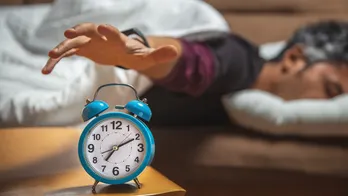6 doctors swallowed Lego heads for science. Here's what came out
Editor's note: This episode contains frequent and mildly graphic mentions of poop. It may cause giggles in children, and certain adults.
When Dr. Andy Tagg was a toddler, he swallowed a Lego piece. Actually, two, stuck together.
"I thought, well, just put it in your mouth and try and get your teeth between the little pieces," he says. The next thing he knew, it went down the hatch.
As an emergency physician at Western Health, in Melbourne, Australia, Andy says he meets a lot of anxious parents whose children succumbed to this impulse. The vast majority of kids, like Andy, simply pass the object through their stool within a day or so. Still, Andy wondered whether there was a way to spare parents from needless worry.
Sure, you can reassure parents one-by-one that they probably don't need to come to the emergency room—or, worse yet, dig through their kid's poop—in search of the everyday object.
But Andy and five other pediatricians wondered, is there a way to get this message out ... through science?
A rigorous examination
The six doctors devised an experiment, and published the results.
"Each of them swallowed a Lego head," says science journalist Sabrina Imbler, who wrote about the experiment for The Defector. "They wanted to, basically, see how long it took to swallow and excrete a plastic toy."
Recently, Sabrina sat down with Short Wave Scientist in Residence Regina G. Barber to chart the journey of six lego heads, and what came out on the other side.
The study excluded three criteria:
- A previous gastrointestinal surgery
- The inability to ingest foreign objects
- An "aversion to searching through faecal matter"—the Short Wave team favorite
Researchers then measured the time it took for the gulped Lego heads to be passed. The time interval was given a Found and Retrieved Time (FART) score.
An important exception
Andy Tagg and his collaborators also wanted to raise awareness about a few types of objects that are, in fact, hazardous to kids if swallowed. An important one is "button batteries," the small, round, wafer-shaped batteries often found in electronic toys.
"Button batteries can actually burn through an esophagus in a couple of hours," says Imbler. "So they're very, very dangerous—very different from swallowing a coin or a Lego head."
For more on what to do when someone swallows a foreign object, check out the American Academy of Pediatrics information page.
Learn about Sabrina Imbler's new book, How Far the Light Reaches.
Listen to Short Wave on Spotify, Apple Podcasts and Google Podcasts.
This episode was produced by Margaret Cirino, edited by Gabriel Spitzer and fact checked by Anil Oza. Valentina Rodriguez was the audio engineer.
Disclaimer: The copyright of this article belongs to the original author. Reposting this article is solely for the purpose of information dissemination and does not constitute any investment advice. If there is any infringement, please contact us immediately. We will make corrections or deletions as necessary. Thank you.







